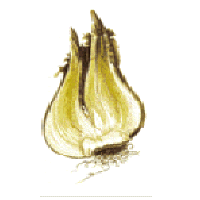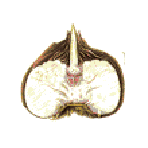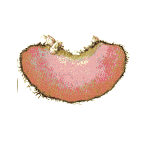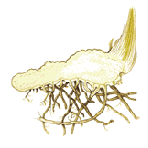Types of bulbs - Bulbs, Corms, Tubers and Rhizomes
A bulb is a specific type of plant part that mainly grows underground, but sends up leaves and flowers for all of us to enjoy at many different times of the year.
For the purpose of this area of the site, we are going to group several types of plants that grow from underground bases, but which are not specifically bulbs. Included in these, will be corms, rhizomes, tubers together with some other ‘fleshy roots.
All have one fact in common. They are all parts of plants which have adapted to growing through long spells of drought or severe weather, by simply hiding away underground until the climate is suitable above ground for them to make an appearance. The underground part - known collectively as bulbs - are basically storage organs or systems which harness and store the nutrients required for getting the plant back into growth when conditions are suitable.
True Bulbs are produced by the following plants.....
- Alliums
- Daffodils – Narcissus
- Hyacinths
- Tulips
- Scillas
- Galanthus – snowdrops
- Leuocojum – Snowflake or Snowpake
- Lilies assorted
- Eremurus

The Bulb of the daffodil is basically a complete plant underground, in that it has leaves - the bulb scales. Roots - even if dormant when you buy them. A stem - the hard little bit at the base of the bulb, and a Flower bud. All of these are - or should be - present when you buy the bulb. The flower is already formed inside the dormant bulb. If the flower bud is not present, then the bulb will emerge blind. No flower.
Together with these, there are several others types of underground stems etc .
Corms are produced by plants such as........
- Gladioli
- Crocosmia – Montbrietia
- Freesias
- Crocus
- Colchicum – Autumn Crocus - Naked Ladies
- Banana – yes it does!
- Some Iris types
- Liatris
- And yes, there are a few others as well.

The Corm of the Crocus differs from the bulb of the daffodil,
in that it is basically an underground stem. Fattened, full of food, and
with its leaves dry and wrapped around the stem, appearing as flaky
scales which protect the buds on the swollen stem which is the corm. If
a corm is cut through, then it will be seen to be a solid mass of flesh
- unlike the daffodil or any other real bulb
Tubers are produced by such plants as...
- Begonias
- Potatoes of course – though we will leave those out!
- Anemones
- Cyclamen
- Dahlias
 The
Tuber, basically has two forms. That of the underground
fattened stem - typified by the potato. It is a stem for it has leaf
buds dotted around its surface. When ready for growth, these leaf buds
push up through the soil and form the stems of the plant. The other type
of tuber is that of the Dahlia. The fattened part of the Dahlia tuber is
simply a root. Normally several of them underground - storing nutrient
with which to freed the plant. If you cut off only the fattened part and
plant it, nothing will happen, for it does not have buds, so cannot
develop stems - or flowers. For a Dahlia tuber to grow, it must have a
little bit of stem - the old dead stem of last season, which has the
flower buds in the base. So for success, we need the tuber - which has
the food reserves - attached to a portion of stem which has the growth
buds. By itself, the stem will not grow. By itself, the tuber will not
grow.
The
Tuber, basically has two forms. That of the underground
fattened stem - typified by the potato. It is a stem for it has leaf
buds dotted around its surface. When ready for growth, these leaf buds
push up through the soil and form the stems of the plant. The other type
of tuber is that of the Dahlia. The fattened part of the Dahlia tuber is
simply a root. Normally several of them underground - storing nutrient
with which to freed the plant. If you cut off only the fattened part and
plant it, nothing will happen, for it does not have buds, so cannot
develop stems - or flowers. For a Dahlia tuber to grow, it must have a
little bit of stem - the old dead stem of last season, which has the
flower buds in the base. So for success, we need the tuber - which has
the food reserves - attached to a portion of stem which has the growth
buds. By itself, the stem will not grow. By itself, the tuber will not
grow.
There are just a few others...
Rhizomes are produced by such plants as......
- Alliums - some.
- Iris
- Canna
- Zantedeschia
- Ginger
- Asparagus
- Some Orchids
- Lily of the Valley
- Some Bamboo
- Alstroemeria
- Chinese lanterns
- A few rather nasty grass-like weeds – such as nutgrass.

The Rhizome of the Iris, is again an underground stem - not a root! Once planted, roots will grow out of it, and also some leaves and hence flower stems. Some types of Irises grow from true bulbs.
Some other plants grow from stolons and are often mistakenly called Rhizomes. A stolon is produced by the likes of strawberry plants, and grows above ground for the main part. A rhizome normally grows underground.